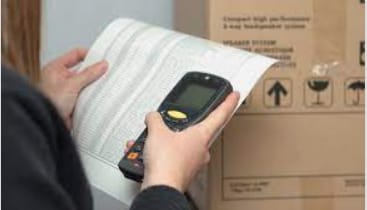
As most people are informed, a barcode identifies a product or item by a number, typically 11 or 12 digits. A computer analyses this data and matches the encoded barcode to a product or object in a database, retrieving the associated information while updating inventory and purchasing the item.
Despite how the barcode is used, the information must be fed into a computer to be decoded. This is where barcode scanners come in.
Barcode Scanners for Inventory
Essentially, A barcode scanner functions similarly to any other input device in that it provides data to the computer via a cord or wire and is linked via a port. Most scanners use a PS2 or RS-232 connector. However, newer devices also employ USB connections for convenient and easy access and installation, and they are gaining popularity as a result. Scanners can range in price from less than a hundred dollars to several thousand dollars, depending on the application and technology used by the scanner. To begin, it’s critical to understand that barcode scanners utilize different types of scanning technologies.
Image-Based Barcode Scanners
Image-based barcode scanners use a tiny camera to capture the barcode and save it in a digital format. The barcode is scanned into a computer and then processed and interpreted. For each sale or piece of goods, new data is pulled from a database and matched. Unlike laser-based scanners, these barcode readers have fewer moving parts and are less prone to damage from a fall or an accident. However, although more economical, image-based barcode scanners can only scan a shorter range than laser-based scanners, making them suitable for some tasks.
Laser-Bases Barcode Scanners
The laser-based system, as previously mentioned, is another scanning technology. To read the barcode, these devices use a sequence of lenses and mirrors to reflect laser beams. The computer reads data from image-based scanners, and the exact steps are taken to update the relevant data on the computer. Multiple moving parts and lenses made of glass or plastic make these scanners more prone to break than the average scanner. Compared to image-based scanners, their scanning distance is noticeably longer. You can scan from as far as twenty-four inches using a laser scanner.
Type of readers according to their shape
The next significant question is, what kind of barcode reader do you need? We all know the primary gun and counter scanners in stores and supermarkets. There are five primary types of scanners, each with its advantages.
Handheld
To use, point the scanner at the barcode and activate it. Most models allow for hands-free operation. Wireless handheld scanners reduce cord mess and increase mobility.
Presentation
They are designed to be placed on a table or stand and not picked up or held. These readers are designed for hands-free scanning and do not need to be activated. Presentation scanners, unlike portable scanners, provide huge reading surfaces that eliminate the necessity for pointing. These scanners are standard in stores since they quickly scan multiple goods. Just place the barcode in front of the scanner, and it will read it.
Integration
They are similar to presentation scanners in that they only show the barcode to the reader. But these are made to be installed in a cabinet or table. You’ve probably seen these scanners in supermarkets and automated checkout lines. Many variants include built-in scales to service a POS lane fully.
Automation
A fixed reader is different from the other types because it is part of a more extensive automated system. These scanners are designed to be put on a conveyor and do not have a scanning trigger or button.
PDA’s
Mobile terminals, which combine a PC and a scanner, offer greater freedom than basic scanners. PDAs can move around freely while storing data in internal storage or communicating via Wi-Fi or WLAN networks instead of tying up a PC with a scanner. In inventory management and asset tracking, mobile terminals are ideal.
What Scanner is Best?
The fundamental question is, ‘why use a scanner?’ This will define the barcode scanner capabilities needed for the best and most efficient result. Laser barcode scanners are ideal for fixed applications such as factories and warehouses. However, image barcode scanners are frequently chosen for use in close quarters or harsh settings, such as outdoors or in extreme heat or cold.
The purpose of the barcode scanner will influence the scanning methodology.

